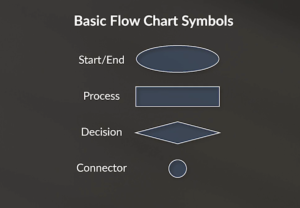In a short time, our world has experienced pivotal changes. From a pandemic to political turmoil to the (second?) Great Resignation to an uncertain economy, it feels like we are all sitting around a giant Poker table, waiting to see what hand we get dealt next.
However, amidst these changes and uncertainties, one thing is certain: There are more startup businesses today than ever before in history. In fact, according to the business formation statistics published by the United States Census Bureau in October 2023, nearly 5.4 million applications to form new businesses were filed in 2021 — the highest of any year on record. With the COVID-19 pandemic violently shoving our already rapidly digitally-transforming world into the next phase of digital transformation, making it easier than ever for people with a computer or device and an internet connection to start an online business, to the gradual decline of mechanistic processes and the collapse of outdated “corporate” attitudes and hierarchical structures, the writing was on the wall.
Although the optimistic leaders and entrepreneurs among us might argue that it is presently a time of opportunity, today’s business world is highly fierce and competitive. Only the strong will survive and thrive. Business Process Management (BPM) has emerged as a key strategic approach to achieving this goal. With a focus on optimizing and streamlining business processes, BPM empowers companies to enhance efficiency, cut costs, and ultimately improve their bottom line.
In this article, we’ll explore the basics of Business Process Management and its significance in the modern business environment.
What is Business Process Management (BPM)?
Business Process Management (BPM) is a process improvement discipline that companies use to optimize and improve efficiency. BPM is a more holistic approach to process improvement, aiming to improve process effectiveness, speed, and overall performance.
BPM and its phases cannot be implemented in a vacuum. What do I mean by that? Although some might argue that implementing BPM doesn’t require an expert or a consultant, it is collaborative effort, driven by a specialist. Most employees only understand the processes they are involved in or work on. When asked to explain a process end to end, most often cannot. It MUST involve leadership, employees, suppliers, project owners, and any key stakeholders involved in a particular process. You can’t improve processes without involving those who are involved in the processes. (This is also where change management comes in.)
The 6 Phases of Business Process Management (BPM)
Whether your company is in finance, tech, marketing, or health care, BPM principles apply, and your business can benefit from them. And—if your company is interested in scalability and sustainability, then it needs BPM.
So, what does BPM look like in practice? Here are the seven phases of BPM.
1. Plan / Assess
Start by documenting a high-level overview of how a particular BPM initiative supports organizational goals. It should also define the scope, including scope inclusions and boundaries, and identify the key stakeholders that we need to involve to plan the improvement initiative. There could be several improvement initiatives; however, in this phase, prioritize the initiatives and select the best one to execute.
It can be overwhelming to determine which processes to work on to improve. The best way to approach this is by developing a process prioritization framework. This can help you identify and document all the business processes. Then, you can identify the most critical processes to improve. How do you know which process(es) are critical? Depending on the organization, the top four categories include the following:
- Impact
- Implementation
- Current state
- Value
All in all, these processes are often those with the following criteria:
- Highest impact—or the processes affecting the most clients, internal team members, executives, and leaders
- The processes with the most pain points and bottlenecks
- The processes yielding the most customer complaints
- The processes expected to yield the highest return
Of course, each organization can determine its own weighting criteria for identifying priority processes and BPM initiatives. If your organization isn’t sure what a “good” process looks like, you can also perform a benchmarking study to benchmark—the good, the bad, and the ugly—with other organizations in your industry.
2. Design / Analyze
In this phase, we document the current (or “as is”) state. This often includes developing flow and process maps of the specific processes we want to improve or change. This can include any process followed to develop a product, deliver a service, or even how digital processes flow within two different systems or applications and how the two interact or “talk” to each other.
One best practice I learned is to create the current state map in pencil. This is to show stakeholders that the current state is “temporary”. Later, as you develop the future or ideal state, then you can later convert the flow chart to another digital program or application (such as Powerpoint, LucidChart, Figma, or Miro, just to name a few). When creating your current state and future state maps, be sure to follow the standard business process management notation (BPMN) symbols:
After mapping out the current state, review and analyze it with key stakeholders to pinpoint issues, such as inefficiencies, bottlenecks, quality concerns, or even waste. Note any changes in the current state map.
When developing process maps, it’s very easy to get into the weeds. One common question I often run into when developing process maps is what is the right level of detail for this map? The answer to this question reverts to the original goals. Here are some tips to follow:
When to keep it high level:
- Process is undefined and there is little shared understanding as to what the process actually is or should be
- Process is complex
- Process is highly variable
- Process has many sub-processes
When to get into detail:
- Process is used by many people
- Experiences high turnover among process workers / technicians
- The process is a subprocess of another process
I find the Design / Analyze phase the most arduous. However, through my experience, I learned that one of the common pitfalls of BPM is spending too much time on the “as is” state. The key here is to employ “quick wins” and share those with stakeholders to keep them engaged in the project. This also can help make for an easier change management transition.
3. Model
This phase is about understanding what a solution looks like from a future state perspective. In this phase, we map out our future or “ideal” state. Essentially, the future state will illustrate the following elements:
- Functional activities
- Internal control points
- Processes and SOPs required for each activity
- Human interfaces and touchpoints
All in all, the future state map should illustrate where the human and system elements meet. Then, perform a gap analysis to determine what is needed to move the organization from the current state to the future (or “ideal” or “to be”) state. This includes determining what systems, processes, resources, and so on are needed to bring the future state to life. This phase involves many stakeholder interviews, developing a change management plan, developing a test plan, developing documentation, and planning for training, all aligned with our future state.
In some cases, depending on the complexity, gap, and degree of change required to transition from the current state to future state, we may be able to rework the current state map to develop our future state map, taking note of the areas for improvement we identified during the Design / Analyze phase.
4. Pilot and Test
Now, we get to the fun stuff: piloting and simulating. This allows us to “experiment” with or “test drive” our new process and/or system to see what we learn from it. We want to pilot and test on a small scale and evaluate the results before expanding it on a larger scale. How do we do that? By developing an implementation plan. This should include the following vital components:
- A test plan (including who will test, what they will test, and acceptance criteria, and when the testing period will occur)
- A training plan
- A communication plan
- A continuous improvement plan
Implementing a new process cannot be done in a vacuum. Regardless of how detailed and specific our analysis, in the Design / Analyze phase, there’s still an element of risk associated with implementing a new process that has not been thoroughly tested. In short, we are doing something new. We are doing something that no one has ever done before. Therefore, we need to pressure test it. It’s best to start small, such as with a prototype or pilot project. Identify a test group of participants, such as subject matter experts. Then, create a test plan that includes specific test cases, acceptance criteria, and when the testing period should occur.
5. Monitor
After we implement, pilot, and test, we now move into the monitoring and controlling phase. This is when we monitor and track performance and key metrics of the new system and/or process we implemented. This phase also involves developing a control plan. This is also the phase when we get to play with data (specifically data visualizations) and see improvement in action. Data will help us to answer the following questions: What is working well? What isn’t? What possible failure points do we need to address? What are the appropriate corrective actions? Once we understand where our failure points are, then we can build the internal controls necessary to help prevent them in the future.
6. Modify
Finally, we reach the final phase—modification. The modification phase is closely tied with the Monitor phase as the Monitor phase heavily involves seeing what is working and what isn’t. After learning and refining what is working, we then move into an ongoing “continuous improvement” phase to further optimize performance.
Why Continuous Improvement is Important
Continuous improvement isn’t so much a specific phase as an ongoing or continuous process. Many organizations overlook or dismiss it because it creates too much overhead. Yes, continuous improvement is somewhat of an investment to start, but if you are actively and regularly tracking, measuring, and making improvements, you will see ROI down the road in the form of reduced costs due to more efficient processes, increased value, improved quality, and reduced waste. Overall, continuous improvement is a mindset.
A continuous improvement plan should include the following:
- The improvement activity
- The frequency at which the activity should be audited
- The audit method (observation, meeting/conversation, etc.)
- The data source (reports, process map, stakeholder interviews, etc.)
- The process “owner” (who is responsible for the process)
You can also make continuous improvement a regular team activity. For example, you could have monthly or quarterly meetings to meet as a group and discuss what processes are working and where improvements might be needed. You can do this by following the Plan Do Check Act (PDCA) method. You can create a simple matrix similar to this:
What About Automation?
While working with many organizations to help them re-engineer and/or improve processes and implement continuous improvement plans, many of them ask me, “Can we use automation to do that?” The short answer is possibly.
If there is one thing that you take away from this article, it’s that Automation is a problem-solving technique for solving efficient, already-improved processes. Automation is NOT designed to solve inefficient processes or perform tasks that people just don’t feel like doing. You first must improve the process, then add in automation to help—not the other way around. In fact, I believe it was Bill Gates who said, “Applying automation and technology to inefficient processes only highlights inefficient processes.”
Don’t Forget About Change Management
Finally, after conducting your analysis and following the steps above, another step that organizations often overlook is change management. Remember, implementing and improving a business process involves change. Human beings are naturally change-averse. Therefore, it’s important to develop a change management plan. As mentioned above, whenever we work to build new and/or improve existing processes, we involve people in this initiative. Remember that everything is a process. And a process likely involves someone’s job. Therefore, it’s important to be mindful of how changing processes also change someone’s job. It’s also important to be mindful of their feelings, interests, and attitudes towards it, as well as consider the training they might need to be successful with the process.
In conclusion, business process management (BPM) disciplines are not just an operational necessity but a strategic imperative for organizations of all sizes, industries, and scopes. By adopting BPM, businesses can achieve greater efficiency, reduce costs, and improve overall productivity. More importantly, BPM fosters a culture of continuous improvement, enabling organizations to remain agile and responsive in an ever-evolving market landscape. Investing in BPM disciplines ensures that every process aligns with the organization’s goals, enhancing both customer satisfaction and competitive advantage. In today’s dynamic business environment, BPM is the cornerstone of sustainable success and growth.



